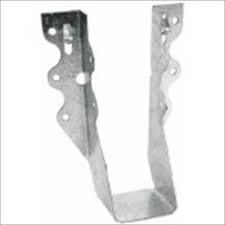I believe in the use of engineered connectors, wherever they can be prudently used in post frame (pole building construction). The average consumer who has visited a lumber yard, or a big-box home improvement center has probably seen many of them, but may not have given them more than a passing thought.
About two decades ago, when I was constructing pole buildings, one of our clients called us after a freakishly high wind storm (significantly higher than the design Code required wind load, at the tim e, of 70 miles per hour) had plowed through their building. This particular building had 2×6 roof purlins on edge, cantilevered over the endwall roof truss, to support the end overhang. The wind literally tore the purlins off the end truss, and flipped the first bay of the roof upside down onto the second bay!
e, of 70 miles per hour) had plowed through their building. This particular building had 2×6 roof purlins on edge, cantilevered over the endwall roof truss, to support the end overhang. The wind literally tore the purlins off the end truss, and flipped the first bay of the roof upside down onto the second bay!
In doing forensic analysis, after the wind died down of course, we determined the connection of the purlins to the end truss with toenails was adequate to have withstood a Code wind load, but not the wind speeds which had attacked the building. The solution for the repair, as well as for future building designs was to utilize a Simpson H-1 bracket to attach overhanging roof purlins to end trusses.
Typical Hansen Pole Buildings utilize many engineered steel connectors manufactured by Simpson. Most typically they include joist hangers to attach roof purlins and bottom chord bracing to interior trusses and strap hangers to attach X bracing to trusses as well as end trusses to columns in high wind load applications.
There is an interesting history to the development of Simpson brackets, which I had been unaware of:
“The Simpson Family has been in the San Francisco Bay Area building community since 1914, but it wasn’t until the mid-1950s that they launched the business that would become a world leader in their industry. And it all really began with a visit from a neighbor.
“The doorbell rang one Sunday night in 1956,” recalled Barclay Simpson, who took over a window screen business from his father in 1947. Outside was a neighbor who was looking to make structural connectors for the ends of 2x4s for a flat roof. Could Simpson help him out? “I said, ‘Of course’ and then tried to figure out whether I could.”
It was that request for a joist hanger that led to the creation of Simpson Strong-Tie, a global company with more than $550 million in sales worldwide (2010), more than 1,800 employees, and nine U.S. and 10 international manufacturing locations. As a publicly traded company, Simpson Manufacturing Co. has had exceptional performance records since the company’s 1994 IPO. As a result, it has consistently commanded the respect of industry analysts for its market leadership, strong fiscal management, and innovative approach to growth.”
My experience is, if an engineered steel connector exists, Simpson makes it – and if it doesn’t exist, their engineering team will find a solution!






